

GIFFORD
US GROWTH TRUST
Investing in the best of the USA. Not the rest of the USA.
We believe only a handful of truly exceptional growth companies drive all long-term returns and that the US is home to a significant proportion of them. So we seek out these rare companies to take full advantage of their long-term growth potential. And as a Trust we can invest up to half of our portfolio in private companies, harnessing growth potential before they even reach the stock market.

Please remember that changing stock market conditions and currency exchange rates will affect the value of the investment in the fund and any income from it. Investors may not get back the amount invested.
Find out more by visiting our website bailliegifford.com A Key Information Document is available. Call 0800 917 2112.
Investors
Your call may be recorded for training or monitoring purposes. Issued and approved by Baillie Gifford & Co Limited, whose registered address is at Calton Square, 1 Greenside Row, Edinburgh, EH1 3AN, United Kingdom. Baillie Gifford & Co Limited is the authorised Alternative Investment Fund Manager and Company Secretary of the Trust. Baillie Giffford & Co Limited is authorised and regulated by the Financial Conduct Authority. The investment trusts managed by Baillie Gifford & Co Limited are listed UK companies and are not authorised or regulated by the Financial Conduct Authority.
VIEW Why any gas price relief in Europe could be short-lived
• US inflation remains sticky, but some there are signs it could be peaking
• Lula stages remarkable political comeback to lead Brazil for a third term
• Investors turn wary eye to Marks & Spencer and Primark-owner
• Halfords investors rejoice as the retailer’s share price finally starts to recover
• Why shares in On The Beach remain down in the dumps
• RELX and CentralNic stand out in latest batch of earnings upgrades and downgrades
New: Migo Opportunities Trust / Visa Updates: Whitbread
17 FEATURE Which of the big five tech stocks should you buy now? Examining their prospects after a miserable earnings season
23 FEATURE Discover the UK stocks which are benefiting from the strong dollar
25 FEATURE Meet the dividend kings: stocks which keep on delivering income
30 EDUCATION Why gilts have seen a surge in investor interest and how they work
FEATURE Sell-off victims: big earners with the largest drops in valuation over five years
IMPORTANT
Shares publishes information and ideas which are of interest to investors. It does not provide advice in relation to investments or any other financial matters. Comments published in Shares must not be relied upon by readers when they make their investment decisions. Investors who require advice should consult a properly qualified independent adviser. Shares, its staff and AJ Bell Media Limited do not, under any circumstances, accept liability for losses suffered by readers as a result of their investment decisions.
Members of staff of Shares may hold shares in companies mentioned in the magazine. This could create a conflict of interests. Where such a conflict exists it will be disclosed. Shares adheres to a strict code of conduct for reporters, as set out below.
1. In keeping with the existing practice, reporters who intend to write about any
securities, derivatives or positions with spread betting organisations that they have an interest in should first clear their writing with the editor. If the editor agrees that the reporter can write about the interest, it should be disclosed to readers at the end of the story. Holdings by third parties including families, trusts, self-select pension funds, self select ISAs and PEPs and nominee accounts are included in such interests.
2. Reporters will inform the editor on any occasion that they transact shares, derivatives or spread betting positions. This will overcome situations when the interests they are considering might conflict with reports by other writers in the magazine. This notification should be confirmed by e-mail.
3. Reporters are required to hold a full personal interest register. The whereabouts of this register should be revealed to the editor.
4. A reporter should not have made a transaction of shares, derivatives or spread betting positions for 30 days before the publication of an article that mentions such interest. Reporters who have an interest in a company they have written about should not transact the shares within 30 days after the on-sale date of the magazine.

Why any gas price relief in Europe could be short-lived
A big drop in the market since the summer is welcome but it might not last
One of the few positives European commentators have been able to cling to in recent times is the big drop in benchmark gas prices.
However, while a glut of gas in storage and mild autumn temperatures are helping for now, there are reasons to believe things could get worse again before they get better, adding to inflationary pressures.
Gas prices have fallen almost to their levels before the war in Ukraine, although they are still comfortably higher than their average before 2021, as a flood of LNG (liquefied natural gas) shipments to Europe have helped fill up storage facilities ahead of schedule.
A European Union target of 80% of total capacity by 1 November has comfortably been surpassed. The latest available data from Gas Infrastructure Europe, the association representing the interests of European gas infrastructure operators, shows EU gas storage is currently 94% full and the UK is at 100% of capacity. For context, the figure for the EU this time a year ago was 77%.
Mild weather and successful campaigns around energy usage in some European countries have helped reduce demand. Add in the limited number of regasification terminals available to process the LNG and it means there are lots of vessels floating around the continent waiting for a slot to unload.
How long this situation lasts remains to be seen, as a ramp-up in demand in other parts of the world could see them leave and head to Asia, for example. Even those which continue delivering gas to Europe will have to return to base in places like the US and Middle East to refill, and because all this happens by sea it will take weeks.
In this context it’s easy to see how, as winter hits and demand peaks, Europe could go from a position of feast to famine when it comes to gas supplies. This is reflected by a position of contango in the LNG market where prices for delivery in December and January are materially above those
European benchmark gas price
for November.
Longer-term the outlook may improve as efforts to diversify away from Russian gas bear fruit, but there needs to be a significant change in energy policy in the UK and Europe for that to happen.
GAM Investments European equities investment director Niall Gallagher says: ‘Governments would like us to believe the energy crisis has been precipitated by Russia. Russia invaded Ukraine, they stopped sending gas to Europe, therefore, their logic goes, we should blame the Russians.’

Gallagher argues it is not that simple and there has been under-investment in oil and gas since at least 2014.
‘We can hope that we move away from oil and gas quite quickly, but it needs to be managed and we need to recognise that 80% of the population still lives in the emerging world; their demand will grow as their economic development catches up with ours,’ he adds.
By Tom Sieber DeputyUS inflation remains sticky, but some there are signs it could be peaking
A big question for investors is how quickly inflation needs to fall to provoke a reaction from the Fed
Inflation data coming in hotter than expected has become a regular feature over the last few months and the latest US PCE (personal consumer expenditure) data continued the trend.
PCE is the Federal Reserve’s preferred inflation gauge and the index advanced by 5.1% year-onyear in September, slightly higher than August’s 4.9% reading.
Core inflation excluding volatile food and energy prices increased 0.5% month-on-month, matching August’s reading and reducing the chance of an immediate pivot away from rate increases. For now investors may have to content themselves with any commentary from the US Federal Reserve which suggests we are at least approaching the peak for monetary tightening.
Meanwhile the decision of Russia to pull out of a Black Sea grain deal could add to global inflationary pressures.
And yet despite the relentless move higher in prices, US 10-year treasury yields fell back below 4% in the last week of October as investors sensed a slowdown in some components of the inflation basket.
As well as lower oil and gas prices, the US property prices notched up a second straight month-on-month decline in August as the rising cost of mortgages crimped demand. Interest rates on mortgages have doubled since the start of the year to 7%.
Investment bank ING is forecasting a 20% decline in US property prices as the cost-of-living crisis, falling stock market and rising mortgage costs squeeze demand.
US property prices have surged more than 40% since the start of the pandemic according to the S&P Case Shiller index. ING reckons the median
price for an existing home is higher today than during the housing boom of the mid-2000s.
ING expects falling property prices to feed through to lower rents, albeit with a lag which should act as a drag on inflation. Owner equivalent rent represents around a third of the consumer price index basket.
The prospect of softer property prices is unlikely to sway the Fed which is focused on ‘substantive’ signs that inflation is falling back towards its 2% target before pausing rate hikes.
An important metric for the Fed is the labour market which remains very tight with nearly two vacancies for every unemployed American, and as many as three in some states.
It is likely the Fed will stay the course until the labour market loosens because of the risk that inflation expectations become imbedded, which makes inflation harder to crack.
A brighter piece of news in that regard showed (28 October) a sharp slowdown in private sector wage growth which increased 1.2% in the third quarter compared with 1.6% in the prior quarter.
Meanwhile, the latest University of Michigan inflation expectations survey increased to 2.9% from 2.7% in October. The survey measures where participants expect inflation to be on average in five years’ time. [MGam]
Lula stages remarkable political comeback to lead Brazil for a third term
The victory could mark a turning point for Latin America’s largest economy
After a fierce campaign with far-right incumbent Jair Bolsonaro, former president Luiz Ignacio Lula de Silva won the second round of elections on Sunday to become Brazil’s leader for a third term.
However, the narrowness of Lula’s win – by 50.9% against Bolsonaro’s 49.1% after a three-hour count – demonstrates how deep conservative sentiment now runs and how split Brazil has become since he was last in power.
As Shares went to press, it still wasn’t clear whether Bolsonaro had officially conceded or whether he would stage a Trump-style protest claiming the election was rigged.
Lula, who was charged with corruption by the Bolsonaro regime in 2018 and spent more than a year and a half in jail, was the most widely-liked Brazilian leader in history with Barack Obama once calling him ‘the most popular politician on Earth’.
He will need all the public support he can get to push through his left-of-centre policies given large swathes of the country including Sao Paolo and two more heavily-populated states are held by the opposition.
Having previously been seen by markets as a radical, Lula kept his policies vague during the election focusing on social justice and the environment.
When he first came to power in 2003, inflation was more than 15% and interest rates were 20% but by the end of his second term those in early 2012 figures were 5% and 9%, a sizeable achievement.
In contrast, inflation has been higher than interest rates for most of the last two years, meaning real interest rates have been negative, and now stands at close to 9% so he needs to allay fears and keep markets onside.
That is easier said than done, although some commentators have suggested he could ‘lean’ on state-owned oil and gas company Petrobras (PBR:BCBA) to keep prices artificially low.
Investors will also want to see how whether he sticks to his pledge during his campaign to abolish the financial cap on social projects and infrastructure and how he intends to finance this spending.
So far this year the Brazilian Bovespa index has risen around 10% while the MSCI World Index has fallen over 20%, making it a strong outperformer.
‘Latin America has been a bright spot amid turbulent global stock markets’, says Sam Vecht, co-manager of the $115 million BlackRock Latin American Investment Trust (BRLA) which has around a two-thirds weighting to Brazil.
While high commodity prices have given it a boost, ‘the region was long due a reappraisal by global investors. In the vogue for a narrow range of US and Asia technology companies, Latin America was side-stepped’ argues Vecht. [IC]

How Latin American trusts and funds have performed in 2022
Investors turn wary eye to Marks & Spencer and Primark-owner
Results next week from fashion chains not expected to offer optimism
Clothing retail will fall under the investor spotlight next week when Marks & Spencer (MKS) and Associated British Foods (ABF) report results, and bright spots are expected to be few and far between.
Shares in Marks & Spencer dropped sharply last month after it warned of cost pressures and unveiled plans to cut more stores. In a presentation to institutional investors (12 October), it said it would cut the number of full line stores by 67 by 2028 to take the total to 180. And in a plan to concentrate on food, it will open 104 Simply Food stores to take the number to 420.
Like all businesses, Marks & Spencer is juggling soaring costs just when UK consumers are having to reign in spending as cost-of-living pressures mount. At the same investors day, the company said it had seen wage inflation of around 7% and it expected more to come in 2023, while energy costs were £40 million higher than planned and without support, it faced possible headwinds of more than £100 million next year.
Food costs were already under pressure but the rampant dollar is also starting to tighten the screw on clothing, with more to come.
Marks & Spencer reports first-half results next week (9 November) and analysts anticipate earnings of 7.58p per share, 17% below prepandemic first-half earnings posted in November 2019.

Its shares have sunk 53% this year to 111.6p. If you exclude the six-month period during 2020, when Covid shutdowns were at their zenith, the stock is trading at close to multi-decade lows.
Marks & Spencer’s share price performance chimes with that of Associated British Foods’ (ABF) shares, which have fallen sharply to £13.77 and are near their lowest since 2013, following an autumn profits warning (8 September). The warning was largely sparked by margin pressure at Primark, which is having to absorb rising costs caused by surging energy prices and a strengthening US dollar.
The retailer has also decided not to push prices too far to help maintain its value credentials for its customers. In time, analysts believe that Primark should benefit as shoppers trade down from more expensive retailers, a shift that seems to have helped discount footwear retailer Shoe Zone (SHOE) to perform well this year.
People under significant financial pressure looking to buy shoes for their kids for school or for work may well turn to Shoe Zone. The company can achieve low prices due to the high volumes it orders direct from factories.
It confirmed robust profit margins and improved cash generation on 25 October, suggesting that its full year results to 1 October 2022 could be a rare bright spot for the retail sector.
Shoe Zone has been rewarded handsomely by investors with its shares up 54% year-to-date.
Halfords investors rejoice as the retailer’s share price finally starts to recover

AFTER BEING STUCK in reverse for a large part of 2022, shares in car parts-to-bicycle seller Halfords (HFD) have finally got into top gear. The stock has moved 35% higher over the past month as the market appears to have reappraised the outlook for the retailer.
HIGHER DOWNMoving in the dumps
public transport given the higher cost of filling up the petrol tank. Less driving might equate to reduced demand for car parts, accessories and services.
on less than five times 2022’s expected earnings. That might have attracted investors searching for value stocks.
The company had been sitting on too much stock, and investors were worried that the cost-of-living crisis would hurt bike sales and see motorists switch their cars for
A trading update on 7 September was reassuring in that full year earnings guidance wasn’t changed, but for every good bit of news there was plenty of bad stuff such as a declining market for bike sales.
At the point of the trading update, the stock was trading
Why shares in On The Beach remain down in the dumps
The company is trying its best to bounce back after the pandemic but investors are unconvinced
THE MARKET REMAINS unenthused about holiday seller On The Beach (OTB), with its share price stuck in the mud. At 102.43p, the shares are down 65% year-to-date and 83% lower than the pre-pandemic high of 615p in April 2018.

A trading update on 25 October said fullyear pre-tax profit was in line with market expectations, fivestar holiday sales were doing very well and investment in the business puts it in a
stronger position once the travel market properly recovers.
This doesn’t seem to be enough to convince investors that the shares are worth buying. There are valid concerns that a recession might negatively impact demand for foreign holidays. However, one could also argue so much bad news is priced into the stock that now is a good time to buy.
Numis forecasts pretax profit will more than double from £14.4 million
A more obvious catalyst for the recent share price surge was the acquisition of LTC on 5 October, it boosted Halfords’ garage and mobile van capacity. The group wants to derive more revenue from motoring services, saying they provide ‘more resilient, needsbased revenue streams’.
The next test for the share price will be half-year results on 23 November. [DC]
in the year to September 2022 to £29.3 million in 2023, and then hit £42.2 million in 2024. Despite these attractive earnings growth estimates, the shares are trading on a mere two times EV/EBITDA (enterprise value to earnings before interest, tax, depreciation and amortisation).
That’s an absolute bargain if you take a long-term view that holiday demand will recover and that On The Beach will be a key player in the market. We certainly do. A bit of patience now could reap big rewards down the line. [DC]
RELX and CentralNic stand out in latest batch of earnings upgrades and downgrades
There’s a diverse set of companies in the latest list of notable earnings upgrades and downgrades as analysts react to a mixed set of third quarter updates.
Small cap internet services outfit CentralNic (CNIC:AIM) saw a string of upgrades following an encouraging trading statement on 18 October which, as research house Edison observed, saw the company ‘continue to benefit from advertisers looking for privacy-safe marketing solutions’.
Management said the company would ‘materially’ outperform expectations for 2022 ahead of a fourth quarter which Edison observes ‘is typically the strongest advertising quarter’.
In an unusual situation, a name to have seen quite a few earnings upgrades and downgrades in the same week is FTSE 100 information provider
RELX (REL) and this reflected the mixed nature of the company’s latest update (20 October).
Berenberg analyst Sarah Simon said: ‘While we had assumed a higher rate on floating debt, the fact this variable rate borrowing is primarily in US dollars means the higher cost will translate into more pound sterling than we had previously assumed.
‘On the flip side, given the legal division is growing faster than we had expected, with the driver looking to be sustainable, rather than oneoff, we have increased our growth rates for legal by a percentage point.’
Emerging markets asset manager Ashmore (ASHM) saw several earnings downgrades after a 14 October update revealed a 12.5% drop in assets under management for the three months to 30 September 2022.
downgrades
Looking for investment trust bargains? This is your quick way in
History suggests now could be the perfect time to buy Migo Opportunities Trust
The last two times the average investment trust discount went into double digits, shares in Migo Opportunities Trust (MIGO) went on to rally hard. Could we see the same again for this £82 million investment vehicle?
The average discount to net asset value for investment trusts went from 2.4% at the start of 2022 to 12.6% at the end of October, according to Refinitiv. Reasons why trusts have traded so far below the underlying value of their assets in 2022 include investor fears over inflation, rising interest rates and a potential recession.
Many investors have been selling down their investment trust holdings and buyers have been thin. However, it feels as if risk appetite is starting to improve which might suggest a new wave of bargain hunting.
STRONG REBOUND
In 2015 the average investment trust discount hit 10% during a brief market wobble and then reached 21% in 2020 when Covid hit. Interestingly, Migo – formerly called Miton Global Opportunities – subsequently enjoyed strong share price gains
MIGO OPPORTUNITIES TRUST BUY (MIGO) 327p
Market cap: £82 million
soon after each of these periods.
Its shares jumped 87% in value between April 2016 and January 2018, while they doubled in price between March 2020 and November 2021.
‘Opportunities tend to come when the outlook is miserable,’ says Migo fund manager Nick Greenwood. ‘The likelihood is that now might be a good time to buy into investment trusts.’

Migo takes stakes in other investment trusts trading below the market value of their underlying assets, typically ones that are misunderstood by generalist investors. Its top 12 holdings are trading on an average 29% discount to net asset value – in simple terms you’re getting £10 worth of assets for £7.10.
It could enjoy a double whammy if two catalysts play out. The first is to invest in investment trusts that subsequently see a rise in their net asset value, which can be driven by earnings growth from their investee companies. The second is to see a narrowing of the discount to net asset value for its portfolio holdings, something that’s called a ‘rerating’.
Some of the styles and sectors with widening discounts to net asset value this year include growth, Europe and small caps but this isn’t typically where Migo looks for opportunities. It focuses on more specialist areas as this is where it is more likely to find mispriced assets in areas of the market that a lot of people don’t understand.
VIETNAM EXPOSURE

Migo’s joint biggest holding is VinaCapital Vietnam Opportunity Fund (VOF), accounting for 7.3% of the portfolio and itself trading on an 18.7% discount to net asset value. It is an investment trust with stakes in companies that operate in areas such as financials, real estate, materials, and supply chain sectors.
‘Vietnam is a big beneficiary of the US/China trade war and the pandemic lockdowns. Many companies are now looking at their supply chains and wanting less exposure to China. Vietnam and India are now seen as more favourable places for manufacturing,’ explains Green. ‘As the macro view gains attention, more investors are likely to look at Vietnam.’
The other joint biggest holding is Dunedin Enterprise (DNE), a private equity trust in the process of selling its investments and being wound up. ‘This is the gift that keeps on giving,’ says Green. ‘Since the decision to put the trust into rundown, everything it touches turns to gold.’ Dunedin has, in many cases, managed to get a better-than-expected price when selling assets which means more money to be handed back to shareholders including Migo. Dunedin is about to return another chunk of cash to investors via a tender offer, which means Migo will have even more money with which to make investments while equities are in the doldrums. Migo had 15.2% of its assets in cash at the end of September.
BIG HOPES FOR URANIUM
Other investments in Migo’s portfolio include Yellow Cake (YCA:AIM) which is a play on the uranium price as it owns physical uranium oxide.
The fund manager says years of weak uranium prices following the Fukushima nuclear plant disaster in 2011 have made it uneconomical to build new uranium mines. Russia’s invasion of Ukraine has made governments think hard about future energy supplies and so nuclear is back on the agenda. It had already been gaining traction in recent years as countries sought more clean energy solutions.
‘Nuclear power is moving back to the mainstream but where will they get the uranium to power new nuclear plants? There is also the fact that Kazakhstan is the world’s biggest uranium producer, and it is arguably under Russian influence,’ says Green. He argues there is scope for supply interference which could push up the uranium price and thereby lift Yellow Cake’s net asset value.
UNDERSTANDING THE CHARGES
Owning shares in Migo will also give you exposure to the biotech industry, German property, and activist investors in Japan. These are the types of investments where it often pays to leave it to the experts to find opportunities rather than pick individual stocks yourself. On that basis, it is understandable that Migo’s 1.3% ongoing charge is higher than you might find with a mainstream global equity fund.
The dividend yield is minimal at 0.12% and the shares currently trade in line with its net asset value. It has generated total returns (share price gains/losses and dividends) of 23% over three years and 151% over 10 years, versus 7% and 82% respectively from the FTSE All-Share index, according to FE Fundinfo. [DC]
Why you should buy payment processing giant Visa right now
The stock offers high-quality, predictable earnings at an attractive price
Buy something on plastic and your credit or debit card is almost certainly powered by either Visa (V:NYSE) or Mastercard (MC:NYSE) – they remain the giants in the electronic payments pool, dominating transactions globally.
Between them, the duopoly processes about 340 billion annual transactions with a value of around $18 trillion.
The company also enjoys some protection from inflation given it takes a small chunk of every transaction it processes. If the value of the transaction is higher due to surging prices, so is Visa’s cut.
Visa stock has been hit hard by the market selloff, but its earnings suggest that it has been hit too hard. For investors looking for quality at a reasonable price, Visa, we believe, is a great fit for ISA or SIPP portfolios.
Visa is the 10th largest company in the S&P 500, and is a mature, stable business at the sharp end of the hugely profitable payment processing business. Gross margins are 97.5%, operating and net profit margins are 67% and 51% respectively, vastly superior to sector averages.
Visa also scores highly on investment quality metrics. Return on equity is running at 44%, showing significant improvement on its 37% fiveyear average, while return on invested capital, a good way to measure operating performance, is 26.9%. The five-year average is 22.5%, so again showing improvement.
At current levels, the shares are back near levels they hit in early 2020, before supercharged growth in digital payments drove shares during the Covid-19 pandemic. Put it another way, the stock is still nearly 20% below levels of July 2021, despite posting record revenue and net income in each of the last two years.
$207.16
$428.6
According to consensus estimates from Investing. com, investors can expect double-digit average annual revenue growth out to full year September 2025, producing nearly 15% a year of average earnings increases.
You’ll also get regular dividends, paid quarterly. The yield is nothing to speak of, forecast at about 0.9% this year, but the payout is growing fast, about 40% last year.
Credit and debit card transactions may be its bread and butter, but Visa is expanding into new areas ripe for growth, such as open-banking initiatives.

It presents itself as a financial data champion through its US Spending Momentum Index, a new way to gauge the health of consumer spending, while it has also moved deeper into the cryptos space, launching its Global Crypto Advisory Practice in December 2021.
That’s a lot of scope for sustainable growth at a price to earnings multiple of just 25 this year, falling to 18.4 by 2025. [SF]
WE’LL FOCUS ON THE DIVIDENDS, YOU ENJOY THE COMMUTE
The Merchants Trust PLC





The Merchants Trust aims to provide an above average level of income that rises over time. So whilst we focus on investing in large UK companies with the potential to pay attractive dividends, you can focus on travel, family, home, retirement – whatever really matters to you. Although past performance does not predict future returns, we’ve paid a rising dividend to our shareholders for 40 consecutive years, earning us the Association of Investment Companies’ coveted Dividend Hero status. Beyond a focus on dividends, Merchants offers longevity too. Founded in 1889, we are one of the oldest investment trusts in the UK equity income sector. To see the current Merchants dividend yield, register for regular updates and insights, or just to find out more about us, please visit us online.
www.merchantstrust.co.uk





A ranking, a rating or an award provides no indicator of future performance and is not constant over time. You should contact your financial adviser before making any investment decision. This is a marketing communication issued by Allianz Global Investors GmbH, an investment company with limited liability, incorporated in Germany, with its registered office at Bockenheimer Landstrasse 42-44, D-60323 Frankfurt/M, registered with the local court Frankfurt/M under HRB 9340, authorised by Bundesanstalt für Finanzdienstleistungsaufsicht (www.bafin.de). The summary of Investor Rights is available at https://regulatory.allianzgi.com/en/investors-rights. Allianz Global Investors GmbH has established a branch in the United Kingdom deemed authorised and regulated by the Financial Conduct Authority. Details of the Temporary Permissions Regime, which allows EEA-based firms to operate in the UK for a limited period while seeking full authorisation, are available on the Financial Conduct Authority’s website (www.fca.org.uk).

INVESTING INVOLVES RISK. THE VALUE OF AN INVESTMENT AND THE INCOME FROM IT MAY FALL AS WELL AS RISE AND INVESTORS MAY NOT GET BACK THE FULL AMOUNT INVESTED.
Whitbread shares continue to look attractive after belting first half
Full year guidance looks assured
the firm cashes in
WHITBREAD (WTB) £25.95
Loss to date: -1.2%
Original entry point: Buy at £26.26, 19 May 2022
SHARES IN THE UK’s leading hospitality and hotel group are barely changed since we initially recommended buying, despite growing fears of a cost-of-living crisis and a potential recession.
As the firm’s recent update revealed, and as data from credit card companies confirms, consumers here and in Europe are still happy to spend on travel and entertainment despite the rising costs of food and energy.
WHAT’S HAPPENED SINCE WE SAID BUY?
UK consumers are undoubtedly starting to cut back on their discretionary spending since we flagged Whitbread (WTB) in May, with home renovations a good example.
However, people still want to travel and the Premier Inn chain with over 90,000 rooms in the UK alone represents good value for money for those looking to make their pound (or euro) go that bit further.

In the half year to September, revenues were more than double the same period last year and were 25% higher than the same period in 2019 before the pandemic.
That increase in turnover turbo-charged earnings, sending the firm to a better-thanexpected adjusted pre-tax profit of £272 million against a prior-year loss of £56.5 million.
As well as a recovery in UK spending, trading in Germany – where it has 14,000 rooms – is
seeing good momentum with some of the more established hotels moving into profit for the first time putting the firm on track to reach its return on capital target.
The company flagged rising labour, energy and food and beverage costs as pushing up operating expenses, but these are being partially offset by higher interest income on its cash and pension surplus.
WHAT SHOULD INVESTORS DO NEXT?
We think investors should make themselves comfortable ready for the next move up in the shares as the company rolls out more rooms here and abroad.
With current trading improving, a declining independent sector – which means less competition at the budget end of the market – and the strength of its brand, the firm is fully confident of its targets for the year to next March. [IC]
A simple route to diversification and inflation protection

to fall into the trap of buying bad companies just because they have a low price.
We tend to think of investment trusts as being sector or region specific. Managers of a closed-ended fund might, for example, focus their efforts on Asia or the global technology sector. Even if a trust does have a broad remit, there do tend to be some limits on it. A fund with a remit to invest in global equities may be able to invest in companies across the globe but it can still only have exposure to equities, and is unable to diversify into bonds, property, alternatives or other assets.
Under these circumstances, achieving a level of diversification can mean trying to combine various trusts to get the desired outcome. This can be a frustrating and time-consuming process, particularly as there may be a level of overlap between trusts, which can end up resulting in unintended concentration risks for the investor.
However, there are some trusts which are able to invest in a broad range of assets and can thus provide a simple route to portfolio diversification. Momentum Multi-Asset Value (MAVT) is one of them. The closed-ended fund invests in a mix of UK and global equities, fixed-income, property, and alternatives. Fund manager Gary Moglione and his team analyse UK equities themselves but invest in funds to get exposure to the other asset classes in the portfolio.
The result of this process is a straightforward route to portfolio diversification for investors. This is true, not just because of the mix of assets that the managers hold, but also the investment approach they take to the markets.
Readers can probably gather from the ‘value’ part of the trust’s name that MAVT’s managers take a valuation conscious approach to their investments. Over the past few years that has meant, for example, avoiding lots of the froth we’ve seen in technology stocks – an approach which has served them well given some of the drastic declines in valuation the sector has experienced in 2022.
Of course, value investing can sometimes lead to managers taking stakes in companies which are, given their poor prospects, ‘cheap’ for a reason. The MAVT team is conscious of this risk and look to ensure they aren’t falling into any value traps when making their investments.
On the UK equities side, the team look beyond top line valuation numbers and dig into a company’s earnings to determine how sustainable they are and what their potential is moving forward. So even if they’re not willing to buy at massive valuation numbers, they also don’t want
This methodology is applied to the other investments the fund managers make, whether it be in alternatives or their global equity holdings. MAVT’s team describes the process it uses to make these decisions as ‘refined value’, with the goal being to have a more nuanced approach than regular value investing and to apply it across a broad range of asset classes, rather than just equities.
It’s a process that has paid off historically, with the trust’s managers meeting their objective of delivering annualised, long-term returns greater than the UK consumer price index, plus 6%. Their approach also means that the portfolio tends to be structured in a unique way – beyond the fact that it offers a broad level of diversification.

For instance, when allocating to other managers, the MAVT team tend to favour small, boutique funds as they believe their managers are more likely to have ‘skin in the game’ and be incentivised to deliver better returns for shareholders. It has also meant they’ve tended to be far less US-centric on the global equities front than other comparable funds.
Moving forward, the trust looks well positioned to handle some of the macroeconomic headwinds we’re facing today. As noted, the trust’s investment objective is linked to inflation, with the aim to produce returns that are substantially in excess of the rate of currency devaluation.
One way the trust managers look to achieve this is through their exposure to alternatives, which currently comprise close to a third of the trust’s assets under management. That includes investments in things like music royalties, infrastructure, and debt instruments.
Income is a big part of the returns these holdings generate and the positive here is that a substantial portion have investments that are explicitly linked to inflation. The others that don’t have this connection still look capable of delivering higher pay outs in line with rising costs.
These sorts of holdings have enabled the trust to be consistent in paying out dividends to shareholders over the years, something that has continued into 2022 with the trust’s board recently announcing its first interim dividend for the current financial year and noting that it is “very likely” the final dividend will increase as inflation rises.
This is not a guarantee that will happen, nor is the trust likely to be immune from some of the problems that the global economy is facing. But the managers have always invested with these problems in mind and in an environment like this, that kind of experience has a value of its own.
MAVT is neatly positioned to deal with the world’s economic problems…WHICH OF THE BIG FIVE TECH STOCKS SHOULD YOU BUY NOW?
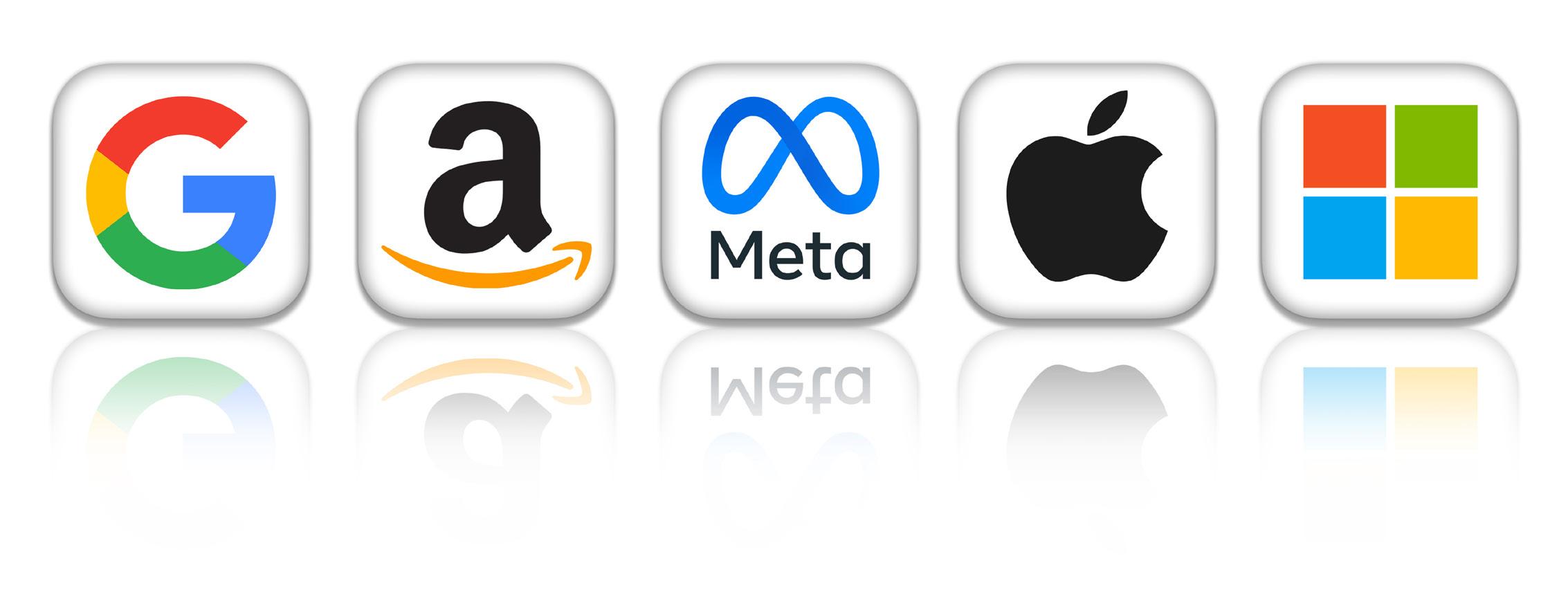
Examining their prospects after a miserable earnings season
By Steven Frazer News EditorGlobal investors hoping big tech earnings would come to the rescue of sliding stock markets will have been left disappointed after the latest round of results. The July to September quarter was a huge earnings disappointment for big tech companies and analysts don’t see much relief on the horizon.
Big Tech kept the economy afloat during the pandemic, when the sector boosted profits, but recent earnings reports reveal that tech behemoths are not immune to the flagging economy. Inflation, rising interest rates, and reduced consumer spending are all a problem.
Months of collective consumer belttightening is starting to hurt, even hitting companies that have previously seemed impervious to economic vagaries. Fortunes have been built on the backs of big tech companies Alphabet (GOOG:NASDAQ), Amazon
(AMZN:NASDAQ), Apple (AAPL:NASDAQ), Meta Platforms (META:NASDAQ) and Microsoft (MSFT:NASDAQ), but it’s clear that even stock market superstars are dealing with a pandemic hangover.

SHOULD YOU START BUY TECH STOCKS AGAIN?
The average share price decline for these five stocks is 38.6% year-to-date. Meta has fared worse, down 72%. Some investors will have lost patience with the sector, but others will be wondering if bad news is already in the price and now is a great time to buy.
There have been positives in the latest earnings season beyond tech which suggests the world isn’t falling flat on its face. Major US banks mostly met or beat expectations, and even streaming platform Netflix (NFLX),which took a walloping earlier in the year, showed signs of promise thanks to hopes for its advertising-backed model option.
Mega tech quarter hits and misses
Forecast (EPS) Forecast (Revs bn) Reported (EPS) Reported (Revs bn)
Alphabet $1.28 $71.34 $1.06 $69.09
Microsoft $2.32 $49.86 $2.35 $50.1
Meta Platforms $1.93 $27.57 $1.64 $27.71
Amazon $0.22 $127.76 $0.28 $127.1
Apple $1.26 $88.76 $1.29 $90.1
But big tech has become so large over the past decade that it tends to dictate stock market sentiment. Alphabet, Amazon, Apple, Meta and Microsoft are worth a combined $7.13 trillion, almost 22% of the S&P 500’s $32.75 trillion market cap.
Tech earnings also offer important clues about where the economy is heading. That’s because the forward-looking, multinational industry is particularly sensitive to inflation, rising interest rates and a strong dollar.
So far, what we’re seeing is rattling investors. Alphabet, Microsoft and Meta Platforms reported that a slowing global economy was battering their businesses.
offerings more. The results, and recent deal announcements, show that large corporate customers are continuing to move work to the cloud, though Microsoft’s finance chief Amy Hood said investors should expect Azure’s growth to slow another five percentage points in the current quarter.

Microsoft has succeeded in getting businesses to buy and upgrade subscriptions for suites of security services and products like Excel and Teams. The company raised list prices of product suites earlier this year and has pushed its premium offerings. In doing so, Microsoft has increased its revenue per user, which is ‘an enduring growth driver’ according to analysts at Bank of America.
ONLINE ADVERTISING IS DRYING UP
In the thick of a slowdown in advertising spending and with a potential recession looming, quarterly results from Alphabet and Meta Platforms missed forecasts and saw their share prices tumble, Meta to a seven-year low.
Microsoft beat expectations but reported its slowest revenue growth in five years (25 October) as rising energy costs and the strength of the US dollar cut away profits. Sales growth in its Azure cloud business – one of the company’s growth bright spots in recent years – was lower than analysts had hoped at 35%.
Azure’s revenue is largely driven by consumption, meaning that it rises as customers use the cloud
Snapchat-owner Snap (SNAP:NYSE) had already raised a red flag on a more difficult backdrop for advertising when its third-quarter revenue missed forecasts, sending its share price 25% lower, but the parent companies of Google and Facebook have been online ads’ dominant duopoly for years, and are seen as a bigger industry gauge.
In a glaring spotlight, Alphabet’s third-quarter sales grew just 6% annually, the slowest pace since June 2020, as executives spoke of deepening cuts in advertising spending, particularly around insurance, loans, mortgages, and cryptocurrencies.
Alphabet, for example, reported a 27% decline
in profits, and Facebook-owner Meta reported a more than 50% fall.
Scott Kessler, an analyst at Third Bridge, noted that as Meta’s revenue has fallen in the past two quarters and its spending increased, its free cash flow plummeted. In the third quarter, Meta’s free cash flow was $173 million, compared with $9.5 billion a year ago.
Until recently, slowing consumer spending would have meant brands cutting non-digital advertisements but maintaining, or even raising, online spending. But with most advertising dollars now going online, that strategy is running out of road.

Wall Street is sending obvious signals that Alphabet and Meta need to tighten their own belts, bring down staff numbers and throw less money at speculative blue-sky projects but company executives seem unwilling to take drastic action.
Gil Luria, a technology strategist at broker DA Davidson, says that even in the face of the earnings drag, the likes of Meta, Alphabet and Microsoft have signalled they’ll continue massive spending.
‘The common thread between the latest mega cap tech earnings reports is the companies’ unwillingness to cut costs aggressively ahead of an economic slowdown in spite of investor expectations,’ he said.
‘We’re in for a dark winter,’ comments Brent Thill, a technology analyst with the investment firm Jefferies. From small to large, he says no one is immune from the economic challenges ahead.
One investor, Altimeter Capital, has called for Meta to slash 20% of its staff to regain investor confidence. The social media landscape remains in flux as TikTok’s surge in popularity and slowing
engagement on rival platforms like Facebook, YouTube, Instagram, and Snap have led to restructuring and job cuts.

Google and Microsoft plan to slow hiring and monitor rising energy and supply chain costs. Apple has similarly noted it will be deliberate about how it expands its workforce as the economy struggles.
APPLE DOING BETTER THAN EXPECTED
Apple, famously touted by investor Warren Buffett as a company that can easily increase prices, is putting that theory to the test. It’s charging more for its streaming music and video services, citing higher costs.

The company has been far more resilient than its peers this year as iPhone sales showed impressive resilience to inflation. There were foreign exchange hits as the dollar surged against other currencies, but most analysts thought Apple’s expensive premium handsets would come under greater pressure given the strain on household budgets, yet so far that has not been the case.
Apple’s share price is down 16% this year, far from great but better than the other four big tech peers, including a near-8% rally following its latest quarterly results published on 27 October.
HOW IS AMAZON COPING?
Online e-commerce giant Amazon is exposed to weakening online advertising revenues and pressure on household budgets.
Its share price has been savaged to such an extent that the company briefly lost its trilliondollar market cap badge in the wake of weakerthan-expected third-quarter results and cuts to guidance for the fourth quarter.
The shares slumped on the news (27 October), prompting some supporters to come out fighting. Goldman Sachs analysts said the 20% move lower in after-hours trading was ‘well overdone’ while Citi told clients to ‘take advantage of any material pullback’ in the shares.
The stock ended the following day 6.8% lower –nowhere near as bad as the initial market reaction, but still a massive one-day move for the shares which sit in so many people’s ISAs and SIPPs (selfinvested personal pensions) either directly or through global equity funds.
Amazon reported a Q3 earnings per share of $0.28 on revenue of $127.1 billion, versus the consensus of $0.22 on revenue of $127.76 billion. Overall, sales rose 15% compared to the year-ago period while operating income came in at $2.5 billion with the company saying foreign exchange headwinds resulted in a $5 billion hit in Q3.
Cloud business AWS’ revenue grew at its
Who dominates cloud computing?
Amazon
slowest pace on record, up 27% to $20.54 billion, much lower than the 31.9% consensus growth estimate and a major slowdown compared to last year’s 39%.
Amazon shares were also hit by weak Q4 guidance as the e-commerce giant expects its revenue to come in between $140 billion and $148 billion, versus around $155 billion previously forecast. Guidance on operating income was for anything from $4 billion to zero, showing how difficult markets are right now. The consensus estimate for operating income was $4.66 billion.
Goldman Sachs analysts admitted the results were ‘mixed’, saying the worry is that Amazon’s growth has begun to slow ‘before the margin narrative is repaired’. Still, they remain bullish longer-term, with a $165 price target on the stock,
albeit down from $175. That compares to a $102 market price at the end of October.
‘We are unchanged in our long-term view of the potential for cloud computing (as evidenced by Amazon’s $104 billion revenue backlog that grew 57% year-on-year) but acknowledge that economic conditions will likely produce slower than normal growth and margins in the coming quarters,’ said the bank.
Goldman’s analysts remain convinced in a multiyear operating income margin expansion story for Amazon on the back of improved e-commerce margins, less international losses and higher profit margin mix contribution from AWS and advertising.

Citi analysts also trimmed their 12-month price target, lowering from $185 to $145, but also flagged margin improvement ahead. They said: ‘The debate going forward is likely to be around margins, which we believe can improve throughout 2023 as Amazon returns to positive free cash flow and note management has prioritised AWS capex spend over free cash and transportation services this year, is culling products, and has implemented hiring freezes across certain parts of the organisation.’
Analysts at JPMorgan took note of weaker-thanexpected results and guidance, but said the report was ‘not thesis-changing’.
Google’s parent looks well-placed to continue its domination of internet advertising, especially given the struggles being felt by the likes of Meta. But like Microsoft, it is building out a powerful and profitable cloud business that has huge potential.

Analysts remain overwhelmingly supportive of Alphabet’s growth potential, promise that is now available to investors on a price to earnings ratio below 20, which is likely to be a rare opportunity.
Apple is one of the biggest smartphone manufacturers in the world. Device sales account for most of Apple’s revenue, but in recent years the company has also focused on higher-margin subscription services, including streaming music and video, gaming, news and cloud storage. A price to earnings ratio of 25 looks good value for its reliable growth and income combination.

One of the world’s most dominant software companies with millions of businesses and private users relying on its Windows operating system to power PCs and laptops. Business applications remain its core source of profit, largely recurring because users get tied into its ecosystem, but it is also building a vast cloud computing empire that is highly profitable and still has a large growth pathway that will accelerate again when the global economy improves.

Discover the UK stocks which are benefiting from the strong dollar
While a surging US currency isn’t great for
firms it is helping some on this side of
While US companies struggle with the impact of the strong dollar on their international revenues, FTSE 100 companies which have costs in sterling but record their sales in dollars should be quids in.
The dollar may have come back a bit recently but taken on a medium-term view its performance against other currencies has been remarkable.
And although most companies hedge their currency exposure each year in order to limit the impact of negative movements, a lot of finance directors will have looked at the outlook for this year and concluded that by not hedging their dollar exposure as much they could see a positive impact on profit.
As long as the Federal Reserve sticks to its gameplan of keeping interest rates higher for longer to try and stamp out inflation, there is little to stop the appreciation of the dollar against other world currencies.
So far the beneficiaries include food and household goods giant Unilever (ULVR), the thirdlargest stock in the FTSE 100 index, which posted third quarter results last week showing turnover grew by 17.8%, of which almost half (8.8%) came from favourable currency moves.
Chief executive Alain Jope raised the firm’s full year guidance for a second time, predicting underlying sales growth of 8% compared with ‘over 6.5%’ previously thanks to price rises and currencies.
Personal care group Reckitt (RKT), which also reported earnings last week, revealed that over half of its reported 14% sales growth for the third quarter was thanks to a tailwind from the strong dollar.
The firm said that if exchange rates stayed where they were at the end of September there would
be a positive effect on sterling sales for the year of around 6% while earnings per share would get a 9% to 10% lift.
Surprisingly, Barclays (BARC) is also on the list of winners as it books between 40% and 45% of its income in dollars but only 30% of its costs, so its profit margin has been helped by the recent surge in the US currency.
Looking ahead, drinks group Diageo (DGE), which like Unilever and Reckitt counts the US and emerging markets – where sales are also typically accounted for in dollars – as its biggest regions, suffered a currency headwind in the year to June but will likely enjoy a boost to revenues and earnings after the rapid climb of the dollar since the summer.

Similarly, drugs group AstraZeneca (AZN), the second-biggest stock in the FTSE 100, is likely to have enjoyed a significant currency tailwind in the third quarter when it reports its latest earnings on 10 November.
 By Ian Conway Companies Editor
By Ian Conway Companies Editor























Meet the dividend kings: stocks which keep on delivering income
Find out which companies fit our tough payout criteria
Among the strategies that can richly reward those investors with a bit of patience is dividend growth investing.
At its heart this involves putting money to work in companies that compound their earnings over time and convert a high proportion of profits into the cold, hard cash needed to fund consistent increases in the shareholder reward.
One fan of this investing style is legendary US fund manager Peter Lynch. The value investor who popularised the ‘growth at a reasonable price’ or ‘GARP’ strategy, he managed Fidelity’s Magellan Fund for 13 years. Beginning in 1977 with $20 million in assets, Lynch wound up his tenure in 1990 with more than one million shareholders and assets north of $14 billion. Over this lucrative period for his investors, Lynch delivered a stunning average annual return of just over 29%.
WHY STOCKS DO BETTER THAN BONDS
In his book Beating the Street, Lynch remarks that ‘the reason that stocks do better than bonds is not hard to fathom. As companies grow larger and more profitable, their stockholders share in the increased profits. The dividends are raised.’
UK income growth stars
Company
DPS 10-year CAGR (%)
Smart Metering Systems 52.9
Best Of The Best 52.7
Impax Asset Management 33.5 YouGov 30.2
BBGI Global Infrastructure 23.7
Avon Protection 23.4 Judges Scientific 20.0 RWS Holdings 18.4 Brooks Macdonald 16.8 Anpario 16.6
Hikma Pharmaceuticals 16.1
Lok'n Store 15.5 Safestore 15.5 FW Thorpe 15.4 Dechra Pharmaceuticals 14.9
Advanced Medical Solutions 14.9

International Public Partnerships 14.5 Diploma 14.1 Tandem 12.3
DCC 11.4
Cranswick 11.1
EMIS 10.6 Clarkson 10.0
DPS = dividend per share CAGR = compound annual growth rate Table: Shares magazine
Stockopedia,
Lynch continues: ‘The dividend is such an important factor in the success of many stocks that you could hardly go wrong by making an entire portfolio of companies that have raised their dividends for 10 or 20 years in a row.’
He adds: ‘Whereas companies routinely reward their shareholders with higher dividends, no company in the history of finance, going back as far as the Medicis, has rewarded its bondholders by raising the interest rate on a bond.’
The feted American investor was fascinated by Moody’s Handbook of Dividend Achievers; for the uninitiated, a dividend achiever is a company that has increased dividends for at least 10 years in a row, no mean feat given the vagaries of economic cycles and shocks from ‘Black Swan’ events like the pandemic we’ve all just lived through.
Covid interrupted the long-run dividend growth streaks of many companies around the globe as corporates hunkered down and conserved cash to ensure they survived to see the other side of Covid. A select band of names continued to increase payouts during the pandemic, though investors were forgiving of firms that temporarily suspended payouts during the crisis before quickly reinstating the shareholder reward or resuming progressive dividend policies.
DISCOVER THE DIVIDEND KINGS
Using Stockopedia to search for dividend champions, Shares has scoured the UK and US stock markets for firms that have grown dividends in at least nine out of the last 10 years – this less stringent screen captures companies that may have undergone the briefest of dividend-paying hiatuses – and also boast 10-year dividend compound annual growth rates (CAGR) of 10% or above.
The starting yield on these investments may not be too impressive but their ability to consistently increase payouts could reward investors who are prepared to be patient.
On the UK market this elite cohort includes DCC (DCC), Diploma (DPLM) and Dechra Pharmaceuticals (DPH), a trio with decadelong dividend CAGRs of 11.4%, 14.1% and 14.9% respectively.


Dublin-headquartered distribution firm DCC grew its dividend by 10% to 176p in the year to March 2022, marking a 28th consecutive year of dividend growth, and the £4.8 billion cap is forecast to grow its shareholder reward by 8.2% and 5.6% in 2023 and 2024 respectively, prospective payouts covered almost 2.5 times by earnings according to Stockopedia.
Growing organically and through acquisitions, Johnny Thomson-led Diploma is another distributor with a dividend more than twice covered. Delivering strong free cash flow conversion and
boasting a robust balance sheet, the industrials controls, seals and life science equipment supplier actually suspended the half year dividend in May 2020 amid Covid uncertainty, but the total dividend continued to rise.

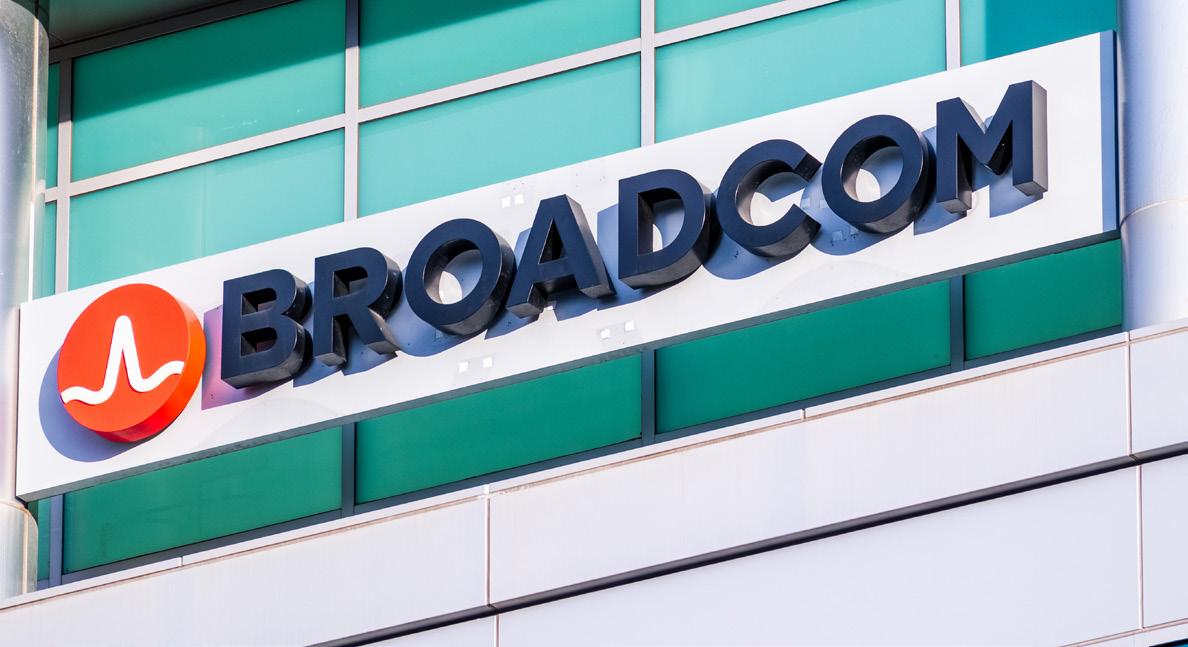
Resilient veterinary pharmaceuticals giant Dechra continued to increase dividends through Covid and the £3 billion cap has raised its final dividend consistently since 2004.
Another UK dividend champion is Cranswick (CWK), which supplies retailers and food service customers with pork, gourmet sausages, chicken and charcuterie as well as olives, houmous and dips.
Dividend cover north of 2.5 times suggests Cranswick’s growing payout is sustainable and the Hull-headquartered group’s market share gains and earnings growth have translated into a tasty 10-year dividend CAGR of 11.1%. In a testament to its resilience, Cranswick increased its dividend by 8% to 75.6p in a year to March 2022 marred by labour shortages, inflation and supply chain disruption, stretching its unbroken dividend growth record to 32 years.

Based on Stockopedia data, Hikma
Pharmaceuticals (HIK) has healthy dividend cover of around 3.5 times, based on estimates for 2022 and 2023, as does another healthcare name, Advanced Medical Solutions (AMS:AIM), the wound care products-to-surgical dressings distributor with forecast dividend cover for 2022 and 2023 north of 4.6 times.
At first glance, cover at Smart Metering Systems’ (SMS:AIM) cover looks quite skinny at sub-0.5 times for 2022 and 2023. And yet the company reported net cash balances of £38.6 million as of 30 June 2022 and upped the dividend by 10% to 20.6p, drawing confidence from a resilient business model underpinned by index-linked recurring cash flows from meter and data assets. However, cover does look light at Avon Protection (AVON), the indebted gas mask manufacturer, at just 0.1 for 2022 and 1.6 for 2023.
WHICH US STOCKS HAVE DELIVERED ON DIVIDENDS?
Investors seeking payout growth across the pond can invest in the ‘Dividend Aristocrats’, S&P 500 companies that have paid and increased their ordinary dividend
US dividend growth stars

every year for at least 25 consecutive years.
The likes of consumer goods giants Procter & Gamble (PG:NYSE) and Johnson & Johnson (JNJ:NYSE) as well as Coca-Cola (KO:NYSE) and Hormel Foods (HRL:NYSE) have hiked their dividends every year for over half a century, even if it has been in small annual increments.
US-listed names with at least nine annual hikes over the past decade, yet delivering more sizeable annual dividend increases, include semiconductorto-infrastructure software products powerhouse Broadcom (AVGO:NASDAQ), a free cash flow monster with a formidable 10-year dividend CAGR of 46.4%.
Payment processor Mastercard (MA:NYSE) has established a decade-long dividend CAGR approaching 30%, and while it has recently been buffeted by headwinds ranging from staff shortages to supply chains squeezes, Tyson Foods (TSN:NYSE), the world’s second largest processor and marketer of chicken, beef and pork, is an income stalwart. Tyson has paid uninterrupted quarterly dividends on its common stock each year since 1977.
iPhone maker Apple (AAPL:NASDAQ) has been generating fantastic returns for investors for a long time and the $2.1 trillion cap enjoys a very loyal customer base prepared to spend on the latest iterations of its iconic handsets, services and wearables.
Admittedly, the weakening consumer backdrop
is taking a bite out of iPad and iPhone sales, but Apple’s brand strength and pricing power have translated into a 10-year dividend CAGR approaching 20%. What’s more, the tech colossus’ cash generation – operating cash flow topped $24 billion in the fourth quarter to 24 September 2022 – and enormous $25 billion cash pile should underpin progressive payouts into the future.

Arguably the world’s best-known sportswear brand, Nike (NKE:NYSE) is on the cusp of joining the S&P Dividend Aristocrats and has delivered a 10-year dividend CAGR of 10.1%.
While the sneakers-to-soccer balls brand faces weakening consumer confidence as well as supply chain challenges and issues in China, the strength of its brand should underpin future payouts progression and crucially, Nike also maintains high dividend cover, which suggests it is unlikely to ruin its dividend growth track record any time soon.
Supplying thirsty consumers with their daily caffeine fix is a potentially recession-resistant line of business that has allowed Starbucks (SBUX:NASDAQ) to brew up a tasty 15.2% decadelong dividend CAGR. The coffee roaster and retailer initiated its dividend in 2010 and has increased it for the past 12 years.
 By James Crux Funds and Investment Trusts Editor
By James Crux Funds and Investment Trusts Editor



Why gilts have seen a surge in investor interest and how they work
Markets expect UK interest rates to peak around 4.8% during late summer of 2023
Since the UK Government’s disastrous miniBudget (23 Sep) and subsequent U-turn there has been marked interest from retail investors in UK gilts.
According to Laith Khalaf, head of investment analysis at AJ Bell, there have been more gilt purchases by AJ Bell customers since the miniBudget than the rest of the year combined.
WHAT ARE GILTS?

Gilts or gilt-edged securities are debts issued by the UK’s debt management office on behalf of the treasury department. Investors buying gilts are lending to the UK Government.
The risk of any government of the UK defaulting is low. Credit rating agency Standard and Poors has a double-A rating on the UK, one notch below the top triple-A rating.
HOW GILTS WORK
Prices of gilts move in the opposite direction to yields.
Gilts are issued at a given nominal value and repaid at maturity on the redemption date. In the meantime, the holder receives a coupon which is a cash payment per £100 nominal value, made in semi-annual payments on fixed dates.
For example, an investor holding £1,000 worth of Treasury 5% 7/3/2025 will receive £50 per year. The value of a bond is comprised of capital value and accrued interest.
Bond prices are usually quoted as clean prices which is the actual price (dirty price) paid less accrued interest. Holders on the register within a week of each coupon payment are entitled to the cash payment.
Because gilts are redeemed at par, an investor buying at a premium to par is guaranteeing a capital loss if the gilt is held to maturity. The total
YIELDS
GILTS
return may still be positive if the accumulated interest payments make up for the capital loss.
WHY WOULD I BUY GILTS?
For the first time in several years gilts provide an opportunity to earn a decent return after two-year yields surged from less than 0.5% a year ago to over 4% at the recent spike. Yields have since fallen to around 3.2%.
That is more competitive than yields on instant access savings accounts but below the best yields available on fixed term savings accounts.
But remember to factor in dealing spreads, commissions, and platform charges, to make an apples-to-apples comparison.
Also, as the last year has demonstrated gilts can inflict capital losses on investors. Historically though gilts have provided relative safety during economic downturns.
HOW DO I BUY GILTS?
Individual gilts can only be purchased over the telephone at AJ Bell (and most other platforms) and held across all types of account. Another option to consider is getting access to gilts through passive funds, ETFs or actively managed funds.
DISCLAIMER: Financial services company AJ Bell referenced in this article owns Shares magazine. The author of this article (Martin Gamble) and the editor (Tom Sieber) own shares in AJ Bell.
By Martin Gamble Education EditorSell-off victims: big earners with the largest drops in valuation over five years
During market corrections some firms are unfairly sold off, Shares takes a look
Higher interest rates have have reduced PE (price to earnings) ratios across the market with the brunt of the damage suffered by highly-rated growth shares.
With only one in six stocks in the FTSE-All Share trading above their 200-day moving average, Shares investigates whether some names may unfairly have been caught up in the indiscriminate selling.
This article reveals some of the biggest deratings and reratings across the UK market. The idea is to identify stocks which have been unreasonably punished by the market. Also highlighted are stocks which have seen an increase in PE, bucking the general derating trend.
WHAT IS A DERATING?
A derating refers to a falling PE ratio while a rerating refers to a rising one. It typically means the share price is out of kilter with the growth in earnings.
It should be remembered that in the long run, earnings per share and cash flow growth are the main drivers of shareholder returns. However, a rising PE alongside rising earnings can be very powerful.
An example will illustrate the effects. If a company can grow earnings by 7% a year, they will double over 10 years. The rule of 70 can be useful here. Simply divide the growth rate into 70 to approximate how many years it takes earnings to double.
If earnings are 10p per share and the PE is 10, the share price will be 100p. In year 10 earnings will be 20p per share and assuming the PE remains the same the share price will be 200p.
But if investors become more positive due to the earnings growth and raise the PE to 20, in year 10 the share price will be 400p, for a four-fold return.
HOW THE SCREENS WERE CREATED
Using Stockopedia software Shares has created two screens which highlight some of the biggest deratings and reratings over the last five years.

The method applied is to compare the forecast PE for the current financial year to the average PE over the last five years.
To ensure a derating isn’t down to a failing business which has gone ‘ex-growth’ the screen stipulates a five-year CAGR (compound annual growth rate) in EPS (earnings per share) of at least 10%.
To focus on the most interesting names, the screen identifies stocks which have suffered at least a 30% derating.
The 23 companies that qualify have grown their earnings by an average of 25% a year over the last five years while their combined share price is up just 2% on average. On average the group has seen
Biggest UK deratings over five years
Name EPS five-year CAGR (%) PE versus five-year average
Tremor International 12.8 −84%
Learning Technologies 73.9 −83%
RWS Holdings 11.2 −72%
CVS 21.3 −71%
Keywords Studios 32.3 −70%
Standard Chartered 58.1 −67%
JD Sports Fashion 15.2 −60%
Playtech 40.3 −54%
Gamma Communications 24.2 −53%
Robert Walters 10.6 −51%
Volution 18.5 −51%
Team17 53.9 −50%
Central Asia Metals 14.9 −49%
Imperial Brands 26.5 −47%
CRH 14.0 −46%
Grafton 12.8 −45%
Countryside Partnerships 11.0 −44%
Greggs 12.8 −41%
Osb 12.6 −41%
Keystone Law 49.1 −38%
London Stock Exchange 12.9 −37%
Vertu Motors 20.3 −34%
Serco 28.1 −30%
Average 25.5 −53%
Table: Shares magazine • Source: Stockopedia, Refinitiv, Shares magazine. Data at 26 October 2022. CAGR=Compound annual growth rate EPS = earnings per share PE = price to earnings ratio
its PE rating halve over the last five years.
Encouragingly, the group has seen its earnings estimates increase by an average of 17% since the start of the year, demonstrating continued business momentum.
WHO’S ON THE LIST?
It is very difficult for any company to maintain a high PE because of the law of large numbers. Doubling the size of a business with £100 million of profit is far easier than one with £1 billion of profit.
Therefore, as companies ‘grow into’ their valuation the PE rating tends to revert to a long term mean or average, creating a natural headwind for shareholder returns.
Digital e-learning software company Learning Technologies (LTG:AIM) is a good example.
Maintaining a PE in the 70s implies a lot of future growth. Despite the high hurdle the company has
of 10 with expected growth of 7.4% according to Stockopedia.
How much of a premium is a difficult question to answer, especially when interest rates are expected to increase further.
delivered a five-year EPS CAGR of 74% a year. The average UK company delivers EPS growth of around 6% a year.
Despite the supercharged growth the PE ratio has fallen 88% to just 13 times, assuming the company meets full year analysts’ forecasts.
That looks like a decent bet given that full-year EPS forecasts have almost doubled in the last 10 months. The shares have halved over the last year.
The brutal derating of Learning Technologies could represent a great buying opportunity, or it may signal investors believe the company has gone ex-growth.

Although analysts expect the company’s longterm growth rate will subside to around 43%, that would still justify a higher PE than the market. For reference the FTSE All Share trades on a PE
Other highly rated companies making the final cut include veterinarian services company CVS (CVS:AIM) and video games services supplier Keyword Studios (KWS:AIM).

Both companies have been derated by 70% despite delivering five-year earnings CAGR of 21% and 32% respectively and have seen full year earnings estimates revised upwards.
At its full year results (23 September) CVS said it had seen strong like-for-like sales growth in the first 10-weeks of the new fiscal year while it had a healthy pipeline of potential deals.
Despite a difficult consumer backdrop with
several peers issuing profit warnings, food-onthe-go firm Greggs (GRG) served up a surprisingly positive trading update for the third quarter to 1 October.
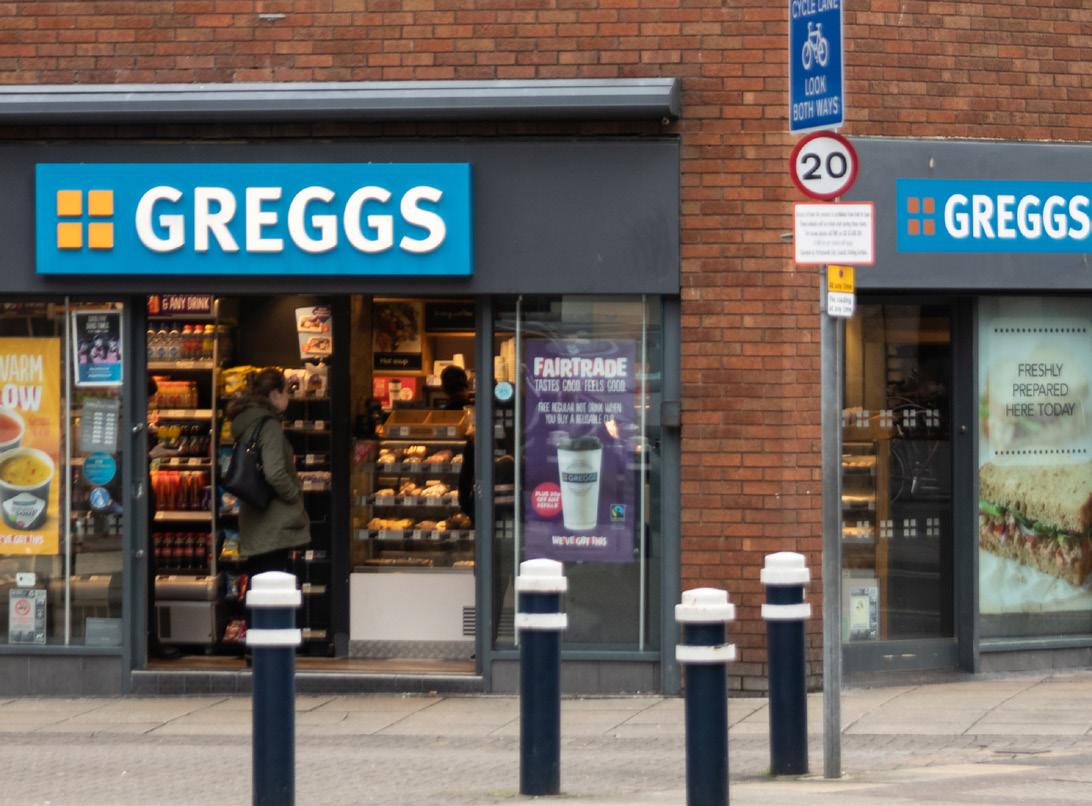
Like-for-like sales from company-managed stores were up 9.7% year-on-year and the company maintained full year earnings guidance.
WHICH COMPANIES HAVE SEEN THEIR VALUATIONS INCREASE?
Some companies have seen a rerating over the last five years which may reflect improving fundamentals or at least better investor sentiment.
In the case of pawnbroker and jewellery retailer H&T (HAT:AIM) it looks like a bit of both. After many years of going nowhere, the shares broke out to new all-time highs in July as macro-economic clouds were building. The shares are up 50% year-to-date.
H&T’s services are expected to be more in demand as cash- strapped consumers look for alternative forms of financing and swap goods for cash.
Earnings revisions for 2022 have increased by around 10% while estimates for 2023 are up almost 50%.
Not all growth stocks on high PEs have succumbed to share price weakness. Shares in telecoms billing and software company Cerillion (CER:AIM) hit new all time highs in early October taking year-to-date gains to 35%.
The shares trade on a PE of 39 which means they have rerated by 43% over the last five years. Earnings growth has been supportive with a fiveyear CAGR of 43%.
Looking forward analysts have pencilled in 20% eps growth for the year to 30 September 2023 after growing by an estimated 44% this year. In a recent


Biggest UK reratings over last five years
Name
EPS CAGR (%)
PE versus five-year average (%)
H & T 7.6% 82%
Ninety One 8.6% 57%
Cerillion 45.1% 43%
CMC Markets 12.3% 35%
Elixirr International 73.9% 34%
Treatt 15.0% 16%
Watches of Switzerland 73.8% 15% Argentex 7.2% 12%

trading statement (24 October) the company said earnings are expected to be marginally ahead of market forecasts.
Canaccord Genuity noted the beat is the fifth in the last 18 months and supports the thesis that the company’s growth drivers are ‘immune’ to macroeconomic factors. Cerillion is benefitting from the push from telecom operators to upgrade and digitise their operations.
By Martin Gamble Education EditorHOW I INVEST:
A mixture of research, futurology and patience
After a long career in broadcasting, Michael explains how investing continues to be fun and rewarding

Seasoned investor Michael has ridden the ups and down of the stock market with aplomb since he first bought shares in BT Group (BT.A) almost 40 years ago.
In this article we discover how he thinks about the process and just as importantly how he enjoys weighing a company’s future prospects.
DO YOUR OWN RESEARCH
‘Ahead of the privatisation of BT in 1984, I taught myself about markets by reading, conversing with colleagues and, when the time came, by writing cheques’, says 69-year-old Michael.
‘Writing a cheque separates a conversation from a commitment, according to Warren Buffett. I was committed. When at each new offering my colleagues cashed in their shares for a quick profit, I held. I became an investor.’
Riding the mid-1980s bull market enabled him to double his money and ‘flattered a newcomer’s ego’, he admits.
By sheer coincidence, the need to pay school
fees saw Michael liquidate his portfolio a month in September 1987, a month before Black Monday, which brought markets tumbling down.
After the collapse of Lehman Brothers and the bailout of the bankers, he read everything he could about what he calls ‘the high-tech ordnance that had done the damage – derivatives, swaps and CDOs in mad matrices of casino bets’.
Among the best books on the crisis he recommends House of Cards by William Cohan, The Big Short by Michael Lewis and Fool’s Gold by Gillian Tett.
HOW I INVEST
Fast forward to 2021, and after a long career in broadcasting Michael was retired and in the comfortable position of having spare money to invest.
‘Many retired people enjoy this luxury but suffer from a painful type of constipation called risk-aversion’, he observes. However, the ultra-low rates on cash deposits rejuvenated
his interest in markets.
He transferred £100,000 from an ISA and allocated it across three platforms (the tables show the portfolios held on each platform). ‘I decided to buy only shares, ETFs and funds. No bonds – too dull,’ he confides.
He invested between £2,000 and £8,000 in each position, with the aim of achieving ‘a mix of sound fundamentals, chunky yields, the prospect of steady growth over five to 10 years and a peppering of risk’.
Michael portfolio 1
Lloyds Banking 20.7%
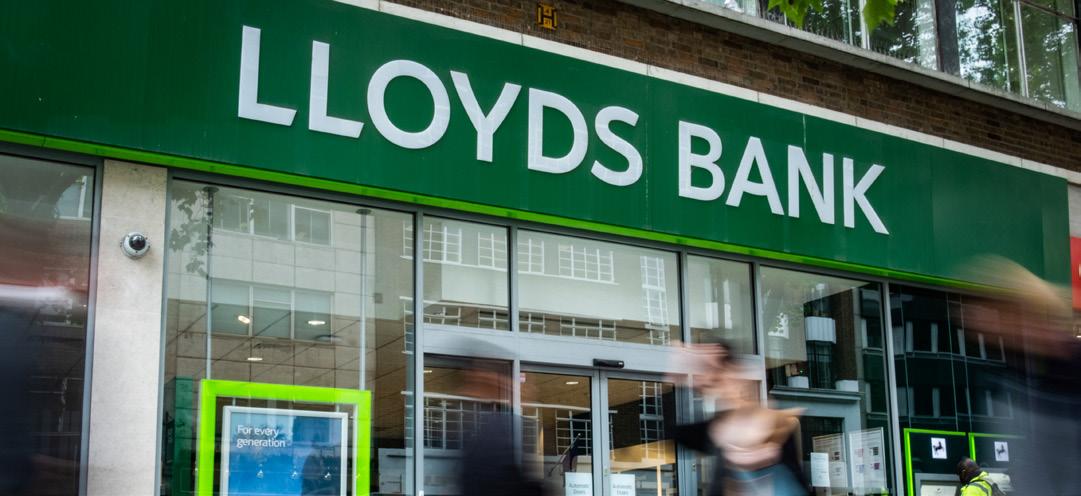
Shell 13.7%
Nestle 13.6%
British American Tobacco 13.4%
Greggs 12.3%
Centrica 11.4%
Alnyam Pharmaceuticals 0.7%
Space Exploration Technologies 0.5%
Staar Surgical 0.5%
Ocado 0.4%
Other and cash 12.8%
done over the long term, although with inflation rising sharply in the short term that job is harder than it was.
‘Now that inflation stalks the streets again it must be factored into expectations. It’s important to understand the pros and cons of inflation. In normal times, I don’t think it’s fanciful to look for 5% over inflation’, he concludes.
Michael has two other key considerations when it comes to investing. First, a stock or fund has to fit his future vision for a sector or for society as a whole. ‘Investing – as opposed to trading – is futurology. What will the world be like in five years? In 20 years? Investing is using your brain, then your imagination.’
He is currently considering future mobility and is running the slide rule over the iShares Electric Vehicle & Driving Technology ETF (ECAR). His second criteria is, it should be fun. ‘My goal is to have fun. The adventure of futurology is the only game in town and I have thoroughly enjoyed it so far.’
BE PHILOSOPHICAL AND THINK LONG TERM
Markets have tumbled this year, but Michael isn’t overly concerned. ‘I’m philosophical. Good investments are generally those made for sound reasons, but markets can be skittish. John Maynard Keynes put it beautifully: “The market can remain irrational for longer than you can remain solvent.”
‘Therefore, it’s essential you limit your exposure to money you can afford to lose. It shouldn’t be rainy-day money – or the school fees fund.’
He believes in investing for the long term, ‘the durability and resilience and ultimately in the honesty of markets’, he says. ‘The market is honest in a way that no politician can afford to be.’
Generally speaking Michael looks for companies with longevity and more good years than bad years, but where there are bad years they need to be easy to explain. Ideally investee companies shouldn’t have too much debt or lots of unallocated cash. Firms with well-known brands are ‘reassuring’. His main aim in investing is beat the rates available on cash, which historically stocks have
Each stock in his portfolio was bought for a reason. Aside from the yield, oil giant BP (BP.) – which is up 12% since purchase – appealed because ‘sustainable energy is an aspiration rather than a reality’.
The company has ‘one foot in the fossil-fueled past and the other trouser leg tentatively rolled up, in the sea of a greener future’.
Drinks maker Diageo (DGE), which is down 3% since purchase, was added because, as Michael observes since the dawn of history human beings have enjoyed a tipple, purely and simply.
Michael portfolio 2
Fidelity Sustainable Global Healthcare W Acc 17.5%
BlackRock World Mining Trust
Finsbury Growth & Income
Monks
BP
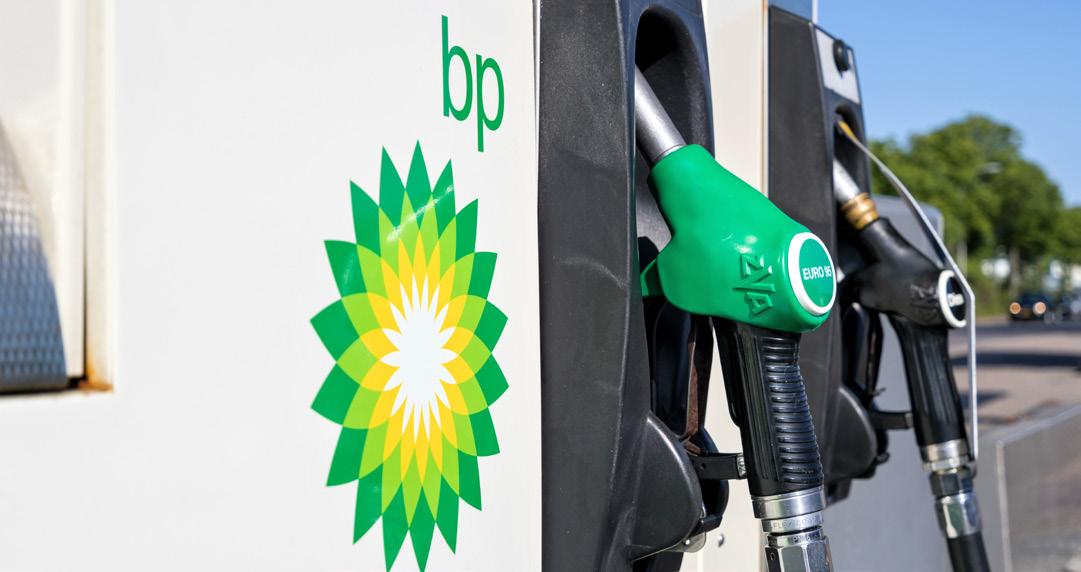
AstraZeneca
Rentokil
Diageo
BT
Rio Tinto
EasyJet
Pharmaceutical firm AstraZeneca (AZN), Michael’s best performer to date with a gain of 27%, was chosen because of its role in saving lives during the pandemic.
‘Covid pandemic focused my mind on healthcare and the issue of an ageing population’, he says. His holding in Fidelity Sustainable Global Healthcare (BJVDYK8) has also done well, up 9% since purchase.
He is sticking with his losers, as he likes both stocks for the long term. Convenience chain Greggs (GRG) may be down 3% but ‘their food-on-the-go is affordable and making your own bento box every morning just isn’t the British way’, says Michael.
His holding in EasyJet (EZJ), which is down 58% since purchase, is less comfortable but he is unconcerned and has recently added very cheaply
Michael portfolio 3
Vanguard S&P 500 ETF 29.8%
Vanguard Germany All Cap ETF 22.9%
Japan Stock Index Fund - Acc 14.9%
Pacific ex-Japan Stock Index Fund - Acc 12.2%
Global Emerging Markets Fund - Acc 10.5%
Vanguard FTSE 250 ETF 9.5%
Cash 0.2%
to my position.
‘People love getting on planes and turbulence is temporary. Also, I’m in the lucky position of being on board for the long haul’, he adds.
Finally, regarding the recent tumult in the gilt market and the panic-selling of assets by defined benefit pension funds, Michael has some advice for trustees.
‘In 2002, I became a trustee of my company’s final salary pension scheme. My 11 years on the board ended when I retired. Pension trusteeship proved to be a fascinating education in a complex aspect of investing.

‘I am astonished that pension trustees should be playing with fire – liability-driven investment funds – rather than simply keeping 2-3% of the fund in cash.’
DISCLAIMER: Please note, we do not provide financial advice in case study articles and we are unable to comment on the suitability of the subject’s investments. Individuals who are unsure about the suitability of investments should consult a suitably qualified financial adviser. Past performance is not a guide to future performance and some investments need to be held for the long term. Tax treatment depends on your individual circumstances and rules may change. ISA and pension rules apply.
By Ian Conway Companies EditorUranium, Explained Seeing Nuclear Energy in a New Light
Nuclear power is a clean, efficient, and essential source of electricity used to meet the world’s growing energy demands. It holds the potential to produce electricity at a greater scale while minimising greenhouse gas emissions.
UNDERSTANDING URANIUM
Behind nuclear power is uranium fuel, which enables power plants to generate electricity. A single uranium pellet, slightly larger than a pencil eraser, contains the energy equivalent of one ton of coal, three barrels of oil, or 17,000 cubic feet of natural gas.1 Global nuclear power output primarily drives the demand for this commodity.
As a heavy, dense, and radioactive metal, uranium is a potent source of energy. Found in most rocks in concentrations of two to four parts per million, it appears as commonly in the earth’s crust as several other metals, such as tin and tungsten.2 Uranium can be found in many parts of the world, but is fairly top-heavy in where the reserves are concentrated. Countries such as Australia, Kazakhstan, and Canada often lead the uranium production charge
ADVANTAGES OF NUCLEAR POWER
Nuclear remains one of the few sources of electricity that combines large-scale power output and low greenhouse gas emissions, with costs comparable to those of traditional fossil fuel power stations.3 Nuclear fission produces thousands of times more energy than that released through the process of burning similar amounts of fossil fuels, making nuclear a very efficient method of generating utility-scale power 4 Additionally, the ongoing fuel costs for nuclear power plants tend to remain quite low, due to the minimal amount of material needed to run the plant.
On top of the power density advantage of uranium, nuclear power also ranks among the cleanest methods of producing electricity, as measured by greenhouse gas emissions. The U.S. Environmental Protection Agency estimates that 25% of global greenhouse gas emissions derive from electricity and heating alone, giving nuclear adequate room to assist in meeting net zero goals.5
Nuclear power contributes approximately 10.4% of the world’s total energy supply and serves as a major source of energy in developed markets.6, 7, 8 Globally, the 55 reactors currently under construction represent a 12.5% increase in nuclear capacity, with an additional 54 reactors planned.9 Increased demand primarily derives from countries with large populations contending with the dual issues of substantial electricity requirements and escalating air pollution problems.
LOOKING AHEAD
In February 2022, the European Commission ruled to label nuclear as a sustainable source of energy, with the announcement aimed to help raise private capital to meet the E.U. climate change targets.10 Such initiatives to expand nuclear energy production and use, delineate the vital role that uranium plays in decarbonisation efforts and are influencing its demand. Nuclear is a crucial energy source in filling energy production gaps associated with this energy transition. The importance of securing stable energy sources beyond natural gas in Europe has also become more urgent in light of ongoing conflicts in the region.
Production cuts in early 2019 supported uranium prices, but the investment case has turned even more positive on the demand side post-pandemic. The focus on keeping operating margins high and costs lean should mitigate large spikes in supply, as miners slowly increase production based on contracted utility demand.
The Global X Uranium UCITS ETF (URNG-LN) provides investors access to a broad range of companies involved in uranium mining and the production of nuclear components, including those in extraction, refining, exploration, or manufacturing of equipment for the uranium and nuclear industries.
Capital at risk. The value of an investment in ETFs may go down as well as up. Prospectuses and Key Investor Information Documents (KIIDs) for this ETF is available in English at https://globalxetfs.eu/ funds/urnu.
INTERESTED IN LEARNING? EXPLORE THE FULL-LENGTH ARTICLE AND SUBSCRIBE TO FUTURE UPDATES.
1 GE Hitachi Nuclear Energy. (n.d.) Nuclear power basics. General Electric. Accessed on April 19, 2022.
2 World Nuclear Association. (2022, February). What is uranium? How does it work?
3 World Nuclear Association. (2021, September). Economics of nuclear power.
4 World Nuclear Association. (2021, September). Economics of nuclear power.
5 United States Environmental Protection Agency. (2022, February 25). Global greenhouse gas emissions data.
6 Krikorian, S. (2020, January 1). Preliminary nuclear power facts and figures for 2019. International Atomic Energy Agency.
7 World Nuclear Association. (2022, March). Nuclear power in the European Union.
8 International Atomic Energy Agency. (2021). Nuclear power reactors in the world: 2021 edition. Reference Data Series No, 2, Vienna.
9 International Atomic Energy Agency. (2021). Nuclear power reactors in the world: 2021 edition. Reference Data Series No, 2, Vienna.
10 Abnet, K. (2022, February 2). EU proposes rules to label some gas and nuclear investments as green. Reuters.
Missing an Element in Your Portfolio?
Is it time to ditch that fixed-rate savings account?
While there are exit penalties the recent increase in interest rates could make it worthwhile
Interest rates on savings accounts have soared in the past few months, since the Bank of England started hiking the base rate. In particular fixed-rate accounts, where your money is tied up for a period of time in return for higher interest rates, have risen dramatically.
Data from Moneyfacts shows that the top oneyear bond in October last year was paying 1.51%, while today it is paying 4.5%, an increase of three percentage points in the space of a year. On twoyear bonds the rate has risen from 1.76% last October to 4.95% today.
For people who locked in a one-year bond a year ago, it will be welcome news that their savings can now get a far higher return, assuming they want to pick a fixed-rate account again. Someone with £15,000 in savings would have got £226.50 interest over the past year, assuming they’d locked in the top rate last October. However, if they sign up to the current top rate one-year deal they’ll make £675 in interest over the next year on that same £15,000 – three times the level of interest they saw a year earlier.
However, anyone who tied up their money for longer this time last year will be frustrated that they are locked into a lower rate and can’t benefit
from the rate increases. One option might be to break their fixed rate account and sign up again at a new rate.
CAN YOU BREAK YOUR FIX?
The first step is to check whether you account allows this at all – some have a total ban on withdrawals, while others will let you take out money if you sacrifice some interest. The most common penalty is sacrificing 90 days’ of interest in order to get your cash out. Considering rates have risen so dramatically, that might be penalty worth taking. Let’s look at some figures.
If you put £10,000 into a two-year fix in October last year at 1.76% you’d make £355.10 in total interest when the account matures after the two-year period in October 2023. If you broke that deal after one year, assuming you had to sacrifice 90 days’ interest to do so, you’d pay a penalty of £43.40. However, by locking into the far higher rates today the additional interest you’d generate would more than counteract the penalty you’d paid.
In October 2023, when the original account would have matured, your savings pot would be
Should I ditch my two-year fix?
October 2021 interest rate 1.76%
October 2022 interest rate 4.95%
Penalty to break the account £43.40
Additional money made by switching £279.07
Table: Shares magazine • Source: AJ Bell/Moneyfacts. Rates accurate to 27/10/22. Calculations based on £10,000 initial investment and figures run until the end of the original term.
Should I ditch my five-year fix?
October 2021 interest rate 2.05%
October 2022 interest rate 5.10%
Penalty to break the account £50.55
Additional money made by switching £1,321.99
Table: Shares magazine • Source: AJ Bell/Moneyfacts. Rates accurate to 27/10/22. Calculations based on £10,000 initial investment and figures run until the end of the original term.
worth £10,634 – almost £300 more, even after paying the penalty.
But what about a five-year account? Those rates have gone from 2.05% last October to 5.1% today. If you saved £10,000 and broke the deal after a year you’d pay a £50.55 penalty, but at the end of the original five-year term you’d have £1,322 more in your savings account if you’d switched to the new account than if you had stuck with the original account.
DISCLAIMER: Financial services company AJ Bell referenced in this article owns Shares magazine. The author of this article (Laura Suter) and the editor (Tom Sieber) own shares in AJ Bell.
By Laura Suter AJ Bell Head of Personal Finance
WHEN IS THE BEST TIME TO FIX?
Before they rush to lock in a deal, savers need to think carefully about whether it’s the right move.
With a fixed-rate account you have to think about what interest rates will do during the period of your fixed term, whether that’s one, two, three or five years. No one has a crystal ball, but at the moment it looks likely that interest rates are going to rise this year and into next year. If you lock in a fixed rate deal today, that means you miss out on these potential future increases.
Savers might decide to park their money in the top-paying easy-access savings account for a few months before opting for a fixed-rate deal. However, there is no right answer, some savers might prefer the certainty of getting a decent deal today rather than waiting it out and risking rates not rising by as much as expected. Another option for savers is to split their money and hedge their bets: Fix half at today’s rates and leave the rest in an easy-access account so they can fix early next year, when rates may have risen further.
Two absolute essentials for anyone who decides to delay fixing their rate is to ensure that in the meantime it’s earning as much interest as possible, rather than earning nothing in their current account. Next is to set a reminder to fix your account. There’s no point waiting it out for a better rate, only to forget to do so and miss the boat entirely.
Why supply chain issues aren't going away anytime soon

Third-quarter earnings have revealed businesses are still struggling to get the goods and materials they need
Hearing words like bottleneck, disruption and crisis in connection with global supply chains isn’t exactly new news but the fact those words are still being used by company bosses during the current third-quarter earnings season is still something worth considering by investors.
And it’s not sector specific, it’s not just about those semiconductors though that’s still a big issue for car makers like Renault (RNO:EPA); Nestle (NESN:SWX), Lockhead Martin (LMT:NYSE) and McCormick (MCK:NYSE) are just a few of the multinationals citing a ‘choppy’ supply chain when delivering their earnings updates.
ELECTRIC VEHICLE PROBLEMS
Electric vehicle (EV) production has been one of the biggest casualties with would-be owners waiting up to 18 months for high-end brands like Porsche’s (PAH3:ETR) Taycan but data out last month from Electrifying.com shows the average wait time for all drivers wanting to make the switch today is nine months.

Global
Chain Pressure
Supply problems typically mean higher costs, a premium that has to come out of somebody’s pocket. After months of big brands being able to pass those hikes onto their consumer there are now questions about exactly how far that pricing power can stretch or, in the case of EVs, how long motorists are prepared to wait before ditching their green move entirely.
While the New York Fed’s Global Supply Chain Pressure Index shows a five-month decline and BMW (BMW:ETR) and European tech behemoth ASML (ASML:AMS) both mentioned that supply chains had begun to stabilise bringing improved margins, there’s still a long way to go to get back to historical levels and a whole host of issues to consider.
WHAT ABOUT CHINA?
Top of the list has to be China’s zero-Covid policy which looks likely to see more cities locked down and factories silenced. Apple’s already facing renewed problems with production of its latest iPhone after a fresh Covid scare garnered headlines with reports of workers fleeing the Foxconn (2354:TPE) factory in Zhengzhou City after public transport was suspended as part of
new controls.
There’s also the ratcheting up of tensions in Ukraine as Russia battles to hold ground ahead of a brutal winter. The Kremlin’s decision to pull out of the Black Sea export deal which had ensured critical supplies made it out of Ukraine has already sent the price of some wholesale foods soaring adding to concerns about the impact of inflation on the most vulnerable. Wheat has been in short supply since the invasion began in February and the price of animal feed and items like sunflower oil have shot up in price heaping more misery on households right around the world.
Then there’s the potential fallout from US measures to curb China’s chip sector. The White House has put export measures in place that limits the sale of advanced chips and chip making tools to the region in a bid to hamper China’s technology ambitions. And they won’t just impact China’s chip companies there are also plenty of discussion taking place in boardrooms right around the world about how the restrictions will impact future production.
Though notably Netherlands-based ASML said in its latest earnings update its shipments next year would only be impacted in a small way because it primarily provides more mature chip technology to China which isn’t affected by the moves.
DANNI HEWSON AJ Bell Financial Analyst

INVENTORY ISSUES
One method of navigating supply challenges has been to up the amount of inventory held but that’s ended up causing its own issues. Pad too much and get stuck with the cost of storing merchandise or worse still get stuck with excess stock you can only get rid of at a loss. Walmart (WMT:NYSE) and ASOS (ASC) know all about that particular quandary. The US retailer had to slash prices in the summer after it was stuck with an oversupply of clothing and ASOS is turning to the high street to flog off it’s glut of out of season apparel.
Both businesses have unsettled investors with their predicament, caught out by the toxic mix of supply chain concerns and a consumer focused on cutting discretionary spend, an issue which is only expected to increase as the cost-of-living crisis erodes people’s purchasing power.

And even companies that managed to largely navigate 2021’s supply issues, like Tesla (TSLA:NASDAQ), are now having to face up to the fact that a huge chunk of people simply don’t have the ability to spend the way they’ve been able to in future years.
The electric car maker had been sitting pretty as competitors struggled with long lead times to get EVs to market giving them a significant window to corner an even bigger share of the market. But inflation is squeezing consumers budgets right around the globe and Tesla’s had to resort to lowering prices in order to secure sales in Asian markets.
And longer term supply chain management is something that all businesses need to think about. Globalisation took a big hit post covid and many producers have thought about those expensive and potentially disruptive trading miles and decided to take the uncertainty out of the equation. Onshoring manufacturing or sourcing suppliers closer to home, however this, in itself, comes with significant costs attached.
How do I find my old pensions and should I combine them?

Helping with a query about finding and combining different retirement pots
Is it worth combining my old pensions with my new provider? I think have two pots from previous jobs, although I’m not entirely sure how to find them. Any help you can provide on either of these points would be gratefully appreciated!
The success of automatic enrolment in getting millions of people saving something for retirement, many for the first time, has exacerbated the problem of ‘lost’ pension pots.
The combination of people switching jobs regularly – around 11 times over the course of a lifetime according to some estimates – and auto-enrolment is creating a vast and hugely valuable sea of retirement money that has become disconnected from its owners.

The pandemic is likely to have spurred an acceleration in career moves over the last four years, driving a £7.2 billion surge in the estimated value of lost pensions, according to research published last week by the Pensions Policy Institute.
There is also some evidence that more people have been moving house since 2018, with the proportion of people having lived in the same house for more than 30 years dropping from 16.6% to 13.1% during that period. Moving house is another key reason why people lose touch with their pensions.

The average value of lost pensions has dropped since 2018, in part because we are likely seeing more lower value pots going missing. Despite this, the average lost pension is still estimated to be worth well over £9,000 – not the sort of money you would normally find down the back of the sofa.
There are plenty of reasons why combining your pensions with a single provider can be a good idea. Most obviously, a single retirement fund is much easier to track and manage than having various pensions with different providers.
You could also benefit from lower costs and charges, increased income flexibility and more investment choice by switching provider.
Older pension schemes, for example, often charge more than modern pensions, while plenty of workplace schemes don’t offer a full range of retirement income options or restrict your investments to the firm’s own in-house funds.
Before transferring any old pensions, you should
check there aren’t any valuable benefits attached which you may lose or exit charges that will be applied. Your provider should be able to tell you if this is the case.
If you do decide to consolidate with a single provider, assuming these are ‘defined contribution’ pensions – where you build up a pot of money which you can access from age 55 – the process should be relatively simple.

If you have a ‘defined benefit’ (DB) pension valued at £30,000 or more, you will need to take regulated financial advice before transferring.
You’ll just need to choose a provider with whom you want to consolidate your pensions and get the details of the pension or pensions you want to transfer over. Once you’ve given the relevant details to your new provider, they should do all the legwork for you.
The Pension Tracing Service is a useful tool to locate missing pensions. From next year, pensions dashboards will begin to be rolled out which should allow you to see all your pensions in one place, online.
DO YOU HAVE A QUESTION ON RETIREMENT ISSUES?
Send an email to asktom@sharesmagazine.co.uk with the words ‘Retirement question’ in the subject line. We’ll do our best to respond in a future edition of Shares.
Please note, we only provide information and we do not provide financial advice. If you’re unsure please consult a suitably qualified financial adviser. We cannot comment on individual investment portfolios.
Shares
WHY BUDGET FLYER EASYJET IS AN ATTRACTIVE BUYOUT TARGET FOR


FRENKEL TOPPING GROUP (FEN)

Richard Fraser, CEO
Its activities include specialist independent financial advice and wealth management with the objective of growing the assets under management.

HENDERSON EUROTRUST (HNE)
Jamie Ross, Portfolio Manager
A trust that seeks to provide a superior total return from a portfolio of high quality European investments, which excludes the UK.
THRUVISION GROUP (THRU)

Colin Evans, CEO
A global providers of fast, safe and respectful people security screening technology for transportation, border control and loss prevention.
WENTWORTH RESOURCES (WEN)

Katherine Roe, CEO
An East Africa-focused upstream oil and natural gas company. It is actively involved oil and gas exploration, development, and production operations.
KEY ANNOUNCEMENTS OVER THE NEXT WEEK

Full-year results:
8 November: Associated British Foods, Beximco Pharmaceuticals. 9 November: Smiths News, Versarien. 10 November: WH Smith.

Half-year results:

7 November: Great Eastern Energy, Tharisa.
8 November: Aveva, Argentex, DCC, Marks Electrical, Oxford Instruments, Warehouse REIT, Zoo Digital. 9 November: Biffa, Marks & Spencer, Volex, Watches of Switzerland, Workspace. 10 November: Auto Trader, National Grid, QinetiQ, Renewi.

11 November: Urban Logistics REIT.
Trading updates
7 November: Beazley. 8 November: Coca-Cola HBC, Persimmon. 9 November: Atalaya Mining, Georgia Capital. 10 November: The Gym Group, Taylor Wimpey. 11 November: Regional REIT, Vistry.

WHO WE ARE
WATCH RECENT PRESENTATIONS

Belvoir Group (BLV)




Louise George, CFO & Dorian Gonsalves, CEO
Belvoir Group is a UK-based property franchise group delivering residential lettings and sales, and property-related financial services to the individual businesses nationwide.
Visit the Shares website for the latest company presentations, market commentary, fund manager interviews and explore our extensive video archive.
Goodbody Health (GDBY) Marc Howells, CEO

Goodbody Health under the strapline Know More. Live Better. is focused on the Health and Wellness of its customers through the local community as a trusted distributor of quality, accredited wellness products and the use of cutting-edge diagnostic equipment enabling customers to manage their health care digitally.
Good Energy Group (GOOD) Nigel Pocklington, CEO
Good Energy Group is a supplier of 100% renewable power and an innovator in energy services. It has long term power purchase agreements with a community of 1,700 independent UK generators. Since it was founded 20 years ago, the company has been at the forefront of the charge towards a cleaner, distributed energy system.




